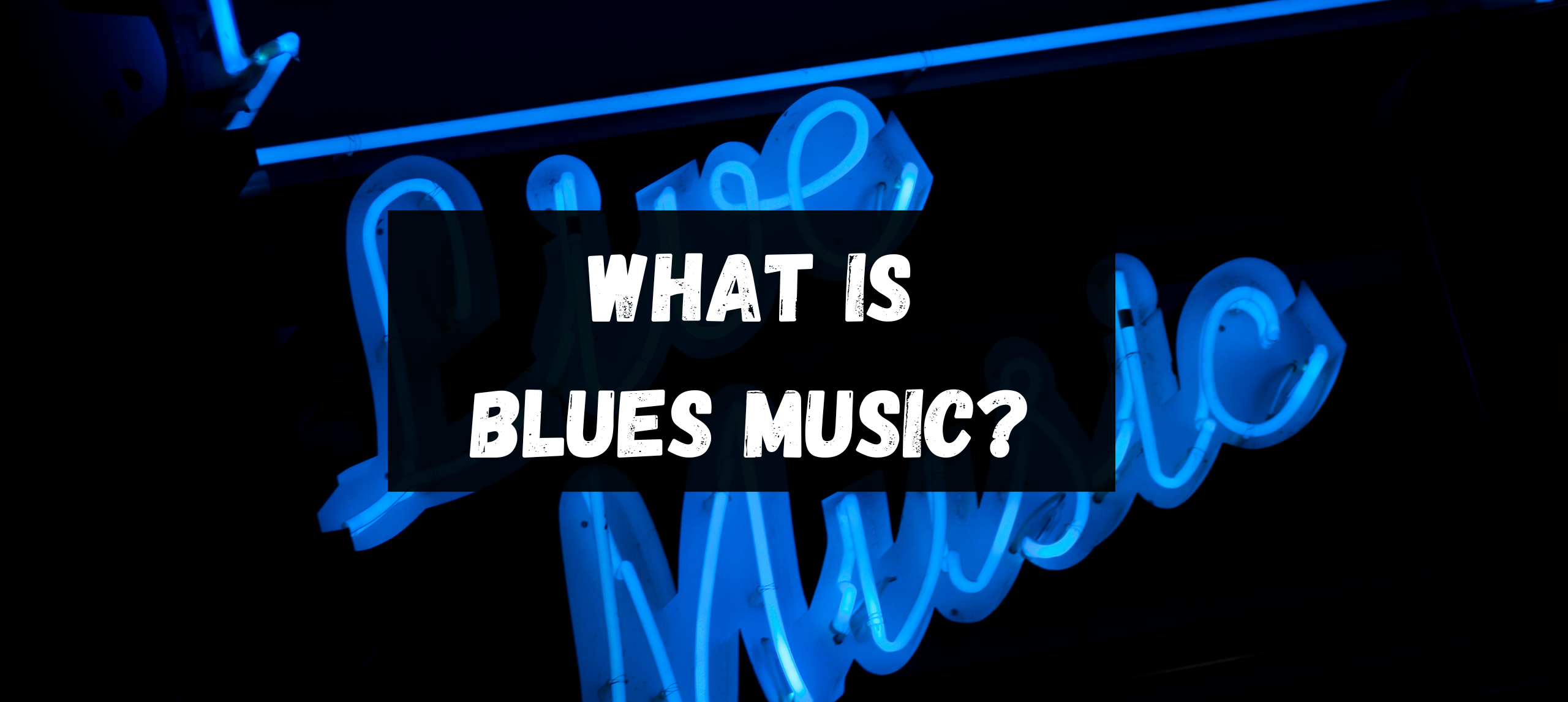August 11, 2023
Howard
Blues music is a genre rooted in African American history, characterised by its emotive expression and often melancholic themes. It typically follows a distinct twelve-bar structure and utilises specific scales that evoke a soulful sound. From its origins in the Deep South of the United States, blues has become a universal musical language, profoundly influencing various forms of music around the globe, including British rock.
Embarking on this exploration of blues music is akin to embarking on a musical journey filled with passion, storytelling, and history. In this blog article, we’ll dive into the fascinating world of blues, uncovering its origin, characteristics, legendary musicians, and why it’s often termed the “Devil’s Music.” Whether you’re a blues aficionado or new to the genre, prepare to immerse yourself in an enthralling narrative that will leave you craving for more. The blues is waiting for you; shall we begin?
Unpacking the Blues: Definition and Characteristics
Although celebrated and influential, blues music remains a genre veiled in complexity and nuance. At its core, it’s a poignant reflection of human emotion, often dealing with themes of hardship, love, loss, and perseverance. But what exactly defines a piece of music as ‘blues’, and what are the distinct features that set it apart from other genres? Let’s delve into the heart of blues to understand its essence.
The Core Elements of Blues
- Twelve-Bar Structure: One of the most defining characteristics of blues is its twelve-bar structure. This refers to a specific sequence of chords played over twelve musical bars, often repeated throughout the song. It creates a framework that gives blues its unique form.
- Blues Scale: The blues scale is paramount to the genre, consisting of specific notes that convey a soul-stirring sound. These notes can impart a sad or ‘blue’ feeling, hence the name of the genre.
- Call and Response: This is a technique where a musical phrase (the ‘call’) is answered by a complementary phrase (the ‘response’). It can be found between instruments, or between a singer and an instrument, creating a musical dialogue that is a staple in blues music.
- Expressive Lyrics: Blues lyrics often narrate personal struggles, joys, and everyday experiences, encapsulating them in poetic and profound ways. The storytelling aspect is what makes blues relatable and enduring.
- Distinct Rhythms: The rhythms in blues are often syncopated and swing-inflected, providing the music with a groove that compels listeners to feel the music rather than just hear it.
Setting Blues Apart
While blues may share certain features with genres like jazz and rock, its raw emotion, unique scale, and specific structural patterns distinguish it. The sheer authenticity of blues—its ability to communicate universal emotions—gives it a timeless appeal that transcends cultural barriers.
Blues has left an indelible mark on the musical landscape, even on this side of the Atlantic, where British musicians have embraced and adapted its forms. Artists like Eric Clapton and The Rolling Stones are a testament to the genre’s profound influence.
Its definition and characteristics tell a story of human experience, one that continues to resonate, captivate, and inspire listeners across the globe, including here in Britain. The blues is not merely a genre; it’s a musical philosophy, a way of feeling and expressing life’s most profound emotions.

The Origin of the Blues: Roots and Evolution
Let’s take a journey back in time to explore the roots of the blues and follow its evolution through the years.
Tracing Back to the Roots
The blues can trace its lineage to the African American communities of the Deep South in the United States, particularly during the late 19th century. The genre emerged from the spirituals, work songs, and field hollers of enslaved people, a musical expression of their pain, hope, and longing.
- Spiritual Influence: The spiritual songs sung in churches played a vital role in shaping the emotional depth of the blues. The call-and-response pattern often found in blues has its origins in African and African American spiritual traditions.
- Work Songs and Field Hollers: These rhythmic chants were used to synchronise labour and ease the burden of hard work. The communal singing, often imbued with hidden messages and double meanings, laid the groundwork for the storytelling aspect of the blues.
- Delta Blues: A subgenre that emerged from the Mississippi Delta, Delta blues laid the foundation for many other styles of blues. Its acoustic, raw, and emotive nature captured the essence of the blues.
Cultural, Historical, and Societal Contexts
The blues didn’t develop in isolation; it was the product of a complex socio-cultural environment.
- Jim Crow Era: During the time of segregation and racial discrimination, blues became a medium for African Americans to voice their struggles and aspirations.
- Great Migration: The movement of African Americans to the Northern cities during the early 20th century spread the blues, leading to the birth of new styles like Chicago blues.
- British Influence: The blues eventually crossed the Atlantic, influencing British musicians and giving rise to the British blues movement. The likes of John Mayall and Fleetwood Mac adapted and reinterpreted the blues, adding a distinctly British flavour.
Evolution of the Genre
Over time, the blues has continued to evolve, branching into various subgenres and influencing a multitude of other musical styles.
- Electric Blues: With the advent of electric instruments, blues took on a new, amplified sound, particularly in urban areas.
- Blues Rock: The fusion with rock music led to a more aggressive style, with British bands playing a key role in this transformation.
- Contemporary Interpretations: Modern artists continue to explore and reinvent the blues, ensuring its relevance in today’s diverse musical landscape.
The blues is not merely an American legacy; it’s a global testament to the enduring power of music to tell stories, connect people, and express the very essence of the human condition.
Why Blues Is Often Termed as the “Devil’s Music”
The blues, despite its soulful resonance and profound cultural significance, has often been enshrouded in myth and controversy. One intriguing epithet tied to the genre is that of the “Devil’s Music.” This provocative label carries with it a history of beliefs, legends, and societal views that have both mystified and misunderstood the blues. Let’s explore why this association came about and delve into the complexities that surround it.
Myths and Legends
The legend of blues musician Robert Johnson selling his soul to the devil at a Mississippi crossroads in exchange for unparalleled guitar prowess is one of the most enduring myths in blues lore. This tale, though likely a fabrication, captured the imagination of many and began to cast the blues in a sinister light.
- Influence of Spiritual Beliefs: The blues’ roots in African spiritual practices, combined with Christian beliefs in the American South, led to misunderstandings and fear of the unknown, feeding into the notion of the blues as “sinful” or “devilish.”
- Lyrical Content: Themes of hardship, temptation, love, and loss were often portrayed in a raw and unfiltered manner in blues music. To more conservative listeners, these expressions might have seemed inappropriate or morally questionable, further contributing to the devilish association.
Societal Views and Controversies
The notion of blues as the “Devil’s Music” is also a reflection of broader societal attitudes and controversies.
- Racial Stereotypes: During a time of deep racial segregation and prejudice, the blues, as a primarily African American art form, was subject to bias and stereotyping. Its connection to the devil was sometimes used to marginalise and discredit the culture and creativity of the African American community.
- Cultural Conservatism: In the conservative society of the American South, the blues’ open emotional expression, and its association with juke joints and rowdy nightlife, clashed with prevailing moral values. This cultural disconnect contributed to the stigmatization of the blues.
- Impact in Britain: Even as the blues made its way across the Atlantic, the mystique of the “Devil’s Music” followed. British musicians were drawn to the raw emotion and depth of the blues, often romanticising its controversial reputation. The British blues movement embraced and reinterpreted the genre, while still grappling with its complex legacy.
In understanding why the blues has been termed the “Devil’s Music,” we uncover a multifaceted narrative that’s intertwined with myth, culture, and societal attitudes. The label, though provocative, is part of the allure of the blues, reflecting a genre that has consistently challenged norms and expressed the human condition in all its complexity and contradiction. Far from diminishing its appeal, the legends and beliefs surrounding the blues have added layers of intrigue and depth, captivating listeners from the Mississippi Delta to the shores of Britain. It’s a testament to the blues’ power to provoke thought, stir emotion, and transcend cultural barriers.

The Melody and Rhythms: Understanding Blues Sound
Blues music, renowned for its soulful melodies and distinctive rhythms, has left an indelible mark on the global music scene. But what are the specific musical elements that define the blues, and how does it stand apart from its close cousin, jazz? Here, we’ll explore the very fabric of the blues sound, from its unique scale to its rhythmic nuances, and decipher what makes it so special.
Distinguishing Elements of the Blues Scale
The Blue Notes: The blues scale is renowned for its ‘blue notes,’ or flattened notes that provide a moody, expressive quality. These notes impart a sad or ‘blue’ feeling that is at the heart of the genre.
- Pentatonic Base: Unlike many Western scales, the blues scale often has a pentatonic (five-note) base, giving it a distinct and less resolved sound. This provides a flexible framework for improvisation and emotional expression.
- Use of Bends and Slides: Guitarists and other musicians in the blues often use bends, slides, and other expressive techniques to create a vocal-like quality in their playing. This contributes to the raw, emotional feel of the music.
Understanding the Blues Rhythms
- Swing and Shuffle Rhythms: Many blues compositions utilise swing or shuffle rhythms, adding a bouncing, grooving feel to the music. This helps create a connection between the listener and the music, inviting them to not just hear but feel the rhythm.
- Syncopation: Syncopation, or the emphasis on off-beat rhythms, adds complexity and interest to the blues. It helps create a conversational, dynamic flow between the instruments.
- Simplicity and Repetition: The simplicity and repetition found in many blues rhythms allow for the lyrical and emotional content to take centre stage. It serves as a grounded base upon which the artist can build and explore.
Comparing Blues with Jazz
While blues and jazz share some common roots and characteristics, they also have distinct differences:
- Scale and Harmony: Jazz often employs more complex scales and harmonies compared to the blues. While the blues focuses on a five or six-note scale, jazz frequently explores various modes and chord substitutions.
- Improvisation: Both genres value improvisation, but jazz typically offers a more complex and sophisticated approach. Blues improvisation often centres on the emotional connection, while jazz emphasises technical mastery and exploration.
- Structural Differences: The blues often adheres to a twelve-bar structure, providing a specific and recognisable framework. Jazz, on the other hand, may have varied and complex structures, allowing for more musical experimentation.
The melody and rhythms of the blues are a symphony of expression, complexity, and authenticity. Understanding the blues’ sound is like appreciating a finely crafted brew that is distinct yet deeply interconnected with other musical traditions.
The Instruments Behind the Soulful Tunes
The blues, a genre imbued with raw emotion and profound expression, draws much of its unique character from the instruments that produce its soulful tunes. From the mournful wail of a harmonica to the gritty growl of an electric guitar, the instruments of the blues are more than mere tools; they’re the voice and heartbeat of the music itself. Let’s delve into the common instruments used in blues performances and highlight their significance in crafting the distinct blues sound.
The Guitar: The Voice of the Blues
The guitar, whether acoustic or electric, is often considered the quintessential instrument of the blues. Its versatility allows musicians to:
- Express Emotion: Through bends, slides, and fingerpicking, guitarists can translate feelings into sound, creating a personal connection with listeners.
- Lead and Accompany: The guitar serves both as a lead instrument, carrying the main melody, and an accompaniment to the vocals, adding depth to the performance.
- Adapt to Styles: From Delta blues’ acoustic fingerstyle to Chicago blues’ electrified sound, the guitar adapts to various blues subgenres, shaping their unique characteristics.
The Harmonica: A Pocket Orchestra
The harmonica’s (or harp’s) compact size belies its powerful impact on the blues. Its importance stems from:
- Emulating the Human Voice: The harmonica’s ability to bend notes and produce wavering tones makes it a perfect instrument to mimic the human voice, adding a vocal quality to instrumental passages.
- Portable Expression: Easily carried in a pocket, it has been a companion to travelling bluesmen, symbolising the nomadic nature of many early blues artists.
The Piano: From Barrelhouse to Boogie
The piano’s role in the blues is multifaceted:
- Versatility: Capable of providing rhythm, harmony, and melody, the piano is a complete musical package within the blues ensemble.
- Historical Roots: From barrelhouse piano in raucous saloons to sophisticated boogie-woogie, the instrument has been pivotal in the evolution of blues styles.
Rhythm Section: Bass and Drums
The rhythm section, typically comprising bass and drums, is the backbone of a blues band:
- Keeping Time: By maintaining a steady rhythm, the bass and drums allow other instruments and the vocals to explore and express freely.
- Creating Groove: Through syncopation and rhythmic patterns, the rhythm section infuses the music with a groove that invites listeners to feel the music physically.
Other Notable Instruments
- Saxophone and Trumpet: Often found in big bands or jump blues, these instruments add a jazzy flair and complexity to the music.
- Slide Guitar: Using a slide to glide along the strings, this technique creates a haunting, ethereal sound, adding another layer of expression.
In conclusion, the instruments behind the soulful tunes of the blues are characters in a narrative, each with a unique voice and story.
Noteworthy Blues Musicians and Their Contributions
The world of blues is rich with iconic figures whose artistry has transcended time and geography. These musicians, through their innovation, passion, and sheer talent, have not only shaped the blues but have left an indelible mark on the broader landscape of music. Here in Britain, and indeed around the globe, the impact and legacy of these artists continue to resonate. Let’s delve into the lives and contributions of some of these remarkable individuals. Please also check out our blog on the top 30 best blues albums.
Robert Johnson: The Crossroads Legend
Robert Johnson’s mythical status as the musician who sold his soul to the devil at a Mississippi crossroads only adds to his mystique. His influence extends far beyond his limited recordings:
- Innovative Guitar Techniques: Johnson’s intricate fingerpicking and emotive slide-playing revolutionised blues guitar.
- Profound Lyrics: His poetic lyrics explored themes of love, despair, and existential angst, setting a benchmark for songwriting in the blues.
- Inspiration to Rock Legends: Musicians such as Eric Clapton and Keith Richards have cited Johnson as a major influence on their playing.
B.B. King: The King of the Blues
B.B. King’s reign as one of the blues’ most influential figures is characterised by his distinct playing style and engaging performances:
- Signature Vibrato: His unique finger vibrato and ‘butterfly’ string bending technique became a defining sound in electric blues.
- Ambassador of the Blues: King’s relentless touring and collaboration with various artists helped popularise the blues across different audiences and generations.
- Award-winning Career: With countless awards, including 15 Grammy Awards, King’s contributions to music have been widely recognised and celebrated.
Muddy Waters: The Father of Chicago Blues
Muddy Waters brought the Delta blues to Chicago, electrifying the sound and giving birth to a new urban blues style:
- Electric Blues Pioneer: By amplifying the Delta blues, Waters created a raw and powerful sound that became the foundation of Chicago blues.
- Influencing Rock ‘n’ Roll: Artists like The Rolling Stones (named after Waters’ song “Rollin’ Stone”) were deeply inspired by his work, bridging the gap between blues and rock.
- Cultural Impact: Waters’ music has become synonymous with the post-war blues movement, capturing the spirit of a generation.
Billie Holiday: The Jazz-Blues Icon
Though primarily known as a jazz singer, Billie Holiday’s emotive delivery and soul-stirring performances have secured her place in blues history:
- Unique Vocal Style: Holiday’s expressive phrasing and ability to convey deep emotion made her one of the most distinctive singers of her time.
- Social Commentary: Her recording of “Strange Fruit,” a protest against racial lynching, showcased the power of music as social commentary.
British Contributions: The Blues Boom
It’s worth noting the significant contributions of British musicians who embraced and reimagined the blues:
- The British Blues Boom: Musicians like John Mayall, Eric Clapton, and Fleetwood Mac played vital roles in the blues revival of the 1960s, creating a uniquely British blues sound.
- Global Reach: The British blues movement helped introduce the genre to new audiences, ensuring its continued relevance and evolution.
To wrap up, the noteworthy musicians of the blues have not only defined a genre but have become part of a cultural heritage that continues to inspire and resonate. Their voices, once born of personal struggle and expression, have become universal anthems. Here in Britain, where the blues has found a second home, we celebrate these artists as giants of music, whose legacy continues to shape, challenge, and enrich our musical landscape. They remind us that the blues is not just a style of music; it’s a way of feeling and understanding the world.
Blues Influence: From Music to Societal Impact
The blues is not merely a genre confined to smoky bars and old vinyl records; it is an evolving narrative that has woven itself into the very fabric of global music and societal culture. Here in Britain, where we’ve embraced the blues as part of our musical heritage, its influence is felt in the notes of rock ‘n’ roll, the beats of hip-hop, and even in the rhythm of our daily lives. Let’s explore how the blues has shaped music and the broader societal landscape.
Influencing Musical Genres
The blues’ musical fingerprints are spread across numerous genres, displaying its vast influence:
- Rock ‘n’ Roll: Artists like The Rolling Stones and Led Zeppelin drew heavily from the blues, adopting its scales, riffs, and emotional intensity. The blues laid the foundation for the birth of rock ‘n’ roll.
- Jazz: The blues scale and the call-and-response pattern found their way into jazz, influencing greats like Louis Armstrong and Miles Davis.
- Country and Folk: The storytelling aspect of the blues has permeated country and folk music, where personal experiences and emotions are narrated through song.
- Hip-Hop and R&B: The themes of struggle and triumph in the blues echo in the lyrics and beats of hip-hop and R&B, forming a cultural and musical bridge.
British Blues Explosion
In Britain, the blues’ influence is particularly profound:
- Blues Revival: The 1960s saw a surge of British artists, like Eric Clapton and John Mayall, reinterpreting the blues, giving it a unique British flavour.
- Inspiring New Generations: The British blues movement not only revived interest in the genre but inspired a new generation of musicians to explore and innovate.
Societal Impact
Beyond the musical sphere, the blues’ influence is deeply rooted in society:
- Voice of a Community: Originally a spokesperson for the African American experience, the blues spoke to the hardships, hopes, and humanity of a community. It became a medium for social expression and solidarity.
- Cultural Understanding: By transcending racial and cultural boundaries, the blues has fostered understanding and empathy between diverse groups of people. It’s a universal language that communicates shared human emotions.
- Inspiring Social Movements: The blues has played a role in inspiring and reflecting social movements, such as the Civil Rights Movement in the U.S., where it served as both a protest and a source of empowerment.
The blues, with its humble beginnings in the American South, has travelled across time and oceans to become a global phenomenon. Its influence is not confined to musical notes but extends to the way we perceive and connect. Here in Britain, we’ve not only been recipients of this rich tradition but active participants in its continual evolution. The blues teaches us that music is not just entertainment; it’s a reflection of our society, a tool for change, and a celebration of our shared humanity. Whether in the lyrics of a rock anthem or the beat of a hip-hop track, the essence of the blues lingers on, reminding us of our collective soul and the power of a simple melody to move the world.
Blues Music Magazines UK
Here’s some UK blues magazines for you to consider reading!
- Blues Matters!: Established in 1999, “Blues Matters!” is one of the UK’s most renowned blues magazines, featuring artist interviews, reviews, news, and features.
- Blues in Britain: This magazine offers news, reviews, and features about the blues scene in the UK, with emphasis on local artists and events.
- Blues & Rhythm Magazine: “Blues & Rhythm Magazine” offers a rich blend of news, reviews, and features on blues, R&B, gospel, doo-wop, soul, and other related genres. As a UK-based magazine, it brings a British perspective to these genres but covers both local and international scenes.
Blues Music Festivals UK
- Ealing Blues Festival: Part of the Ealing Summer Festivals series, the Ealing Blues Festival is one of the most significant blues events in London, showcasing a mix of local and international talent.
- Colne Blues Festival (The Great British Rhythm and Blues Festival): Taking place in Colne, Lancashire, this festival is among the UK’s premier blues events, attracting top national and international blues acts.
- Broadstairs Blues Bash: A free festival in Kent, it offers a range of blues performances across various venues in the Broadstairs area.
- Upton Blues Festival: Held in Upton upon Severn, Worcestershire, this is a free festival spread across multiple venues, boasting a mix of established and emerging blues acts.
- Dereham Blues Festival: It draws in both local and national blues artists and bands. Multiple venues throughout the town host live blues performances, making it a town-wide celebration.
- Red Rooster: Red Rooster Festival prides itself on celebrating the best of rhythm and blues, Americana, soul, roots, and country. Set in the beautiful grounds of Euston Hall, the festival offers an immersive experience with its deep southern vibe, showcasing music that pays homage to the American South.
These are just suggestions, and there are many great events not listed that I urge you to explore!
Common Misconceptions and FAQs
In our exploration of blues music, particularly in Britain, where the genre has been embraced and transformed, it is not uncommon to encounter certain misconceptions and frequently asked questions. By addressing these common queries and misunderstandings, we can further appreciate the nuanced and multifaceted nature of the blues. Let’s tackle some of the most prevalent issues.
While blues has its roots in expressing sorrow and hardship, it is also a celebration of resilience, joy, and human emotion. From foot-stomping rhythms to soulful ballads, blues is as diverse in mood as it is in form.
The blues is characterised by specific scales (such as the blues scale), a call-and-response pattern, and often a 12-bar structure. Its thematic content, emotional depth, and unique instrumentation set it apart, while also influencing and intertwining with other genres.
While the 12-bar blues is a classic form, blues music is rich and varied in its arrangements. Different subgenres like Delta, Chicago, or British blues have their distinct stylistic elements and structures.
While originating in the American South, the blues has become a global genre, embraced and adapted by various cultures. Britain, for instance, has played a significant role in the blues revival and innovation, with British artists contributing to the genre’s evolution.
The blues is a living, breathing art form that continues to evolve, influence, and inspire musicians of all ages. Its timeless themes and innovative interpretations make it relevant to listeners across generations.
Conclusion: The Everlasting Legacy of the Blues
As we draw the curtains on our exploration of blues music, we find ourselves standing before a genre that, despite its historical roots, continues to resonate with undiminished vigour in the modern era. Here in Britain, where the rain-soaked pavements have often echoed with the sounds of the blues, we bear witness to a musical tradition that defies mere categorisation as a genre but rather presents itself as a testament to human experience and creativity.
The blues, with its soulful melodies and heartfelt narratives, is not merely a musical style but a living embodiment of emotions, struggles, triumphs, and the universal human condition. From the smoky bars of the Mississippi Delta to the vibrant music halls of London, the blues connects us, transcending age, race, and geography.
Go On, Have a Gander At These

Howard Head
I turn confused bass enthusiasts into bass gods through a simple and logical process.

















